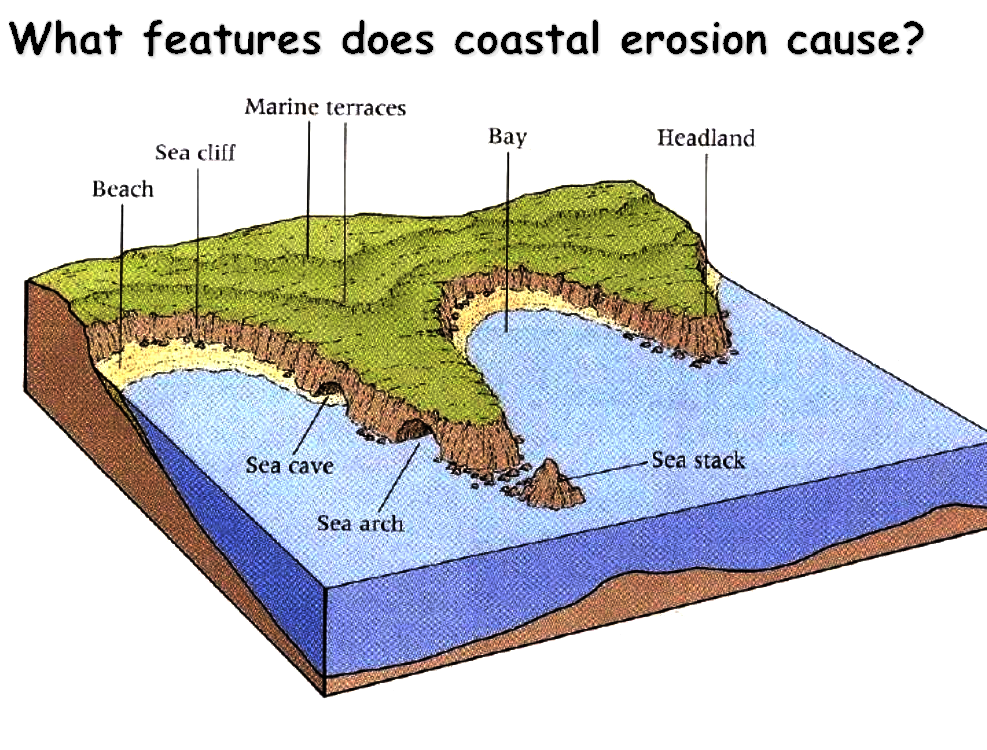Biodiversity & Environment
Sea Erosion in India
- 19 Aug 2021
- 7 min read
Why in News
Recently, the National Centre for Coastal Research (NCCR) under the Ministry of Earth Science has published a report that said one-third of India’s coastline underwent sea erosion in 28 years.
- As much as 32% of India’s coastline underwent sea erosion and 27% of it expanded between 1990 and 2018.
Key Points
- Findings of the Report:
- India’s Coastline:
- The country’s coastline is 6,631.53 kilometres long which is surrounded by the Arabian Sea in the west, Bay of Bengal in the east, and the Indian Ocean in the south.
- 2,135.65 kilometres was subject to varying degrees of erosion and 1,760.06 km expanded during this period.
- Nearly 2,700 km of the coastline is stable.
- The long coastline of India is dotted with several major ports such as Kandla, Mumbai, Nhava Sheva, Mangalore, Cochin, Chennai, Tuticorin, Visakhapatnam, and Paradip.
- The country’s coastline is 6,631.53 kilometres long which is surrounded by the Arabian Sea in the west, Bay of Bengal in the east, and the Indian Ocean in the south.
- Coastal Erosion:
- 60% of the coastline of West Bengal underwent erosion during the period followed by Puducherry (56%), Kerala and Tamil Nadu at 41% and 41%, respectively.
- More erosion in Eastern Coast than the Western coast:
- The eastern coast sees a lot of rain which keeps the seas rough through most of the year. Besides the Southwest Monsoon (June to September), the eastern coast also witnesses the Northeast Monsoon from October to December and brings rain to coastal Andhra Pradesh and Tamil Nadu.
- The eastern coast underwent more erosion due to frequent Cyclonic Activities from Bay of Bengal in the past three decades, compared to the western coast, which remained largely stable.
- Land Accretion:
- Odisha on the eastern coast is the only state where the coast witnessed an expansion of more than 50%.
- This was followed by the coast of Andhra Pradesh, which expanded 48%; Karnataka (26%) etc.
- India’s Coastline:
- Coastal Erosion:
- Meaning: Coastal erosion is the process by which local sea level rise, strong wave action, and coastal flooding wear down or carry away rocks, soils, and/or sands along the coast.
- Erosion and Accretion: Erosion and accretion are complementary to each other. If the sand and sediments have drifted from one side, it must accumulate somewhere else.
- Soil erosion is the loss of land and human habitation as sea water washes off regions of soil along the coastline.
- Soil accretion, on the other hand, results in an increase in the land area.
- However, if accretion happens in Deltas, Estuaries, and creeks, the soil will block the inflow of seawater into these areas which are breeding ground for several species of aquatic flora and fauna.
- Impact: Recreational activities (sun bathing, picnicking, swimming, surfing, fishing, boating, diving, etc.) may be affected if existing beaches are reduced in width or disappear altogether. Also, there can be an impact on livelihoods of coastal communities.
- Measures: Coastal habitats such as Mangroves, Coral Reefs and lagoons are recognized as the best defence against sea storms and erosion, deflecting and absorbing much of the energy of sea storms. Therefore, it is important to maintain these natural habitats for shore protection as well as for environmental conservation.
- Factors causing Coastal Erosion:
- Natural Phenomena:
- Wave energy is considered to be the primary reason for coastal erosion.
- Natural hazards like cyclones, thermal expansion of seawater, storm surges, tsunami etc due to the melting of continental glaciers and ice sheets as a result of climate change hamper the natural rhythm and precipitate erosion.
- Littoral Drift:
- Strong littoral drift resulting in sand movement can also be considered as one of the major reasons for coastal erosion.
- Littoral drift means the natural movement of sediment along marine or lake shorelines by wave action in response to prevailing winds.
- Strong littoral drift resulting in sand movement can also be considered as one of the major reasons for coastal erosion.
- Anthropogenic Activities:
- Dredging, sand mining and coral mining have contributed to coastal erosion causing sediment deficit, modification of water depth leading to longshore drift and altered wave refraction.
- Coastal erosion has been sparked by fishing harbours and dams constructed in the catchment area of rivers and ports reducing the flow of sediments from river estuaries.
- Dredging, sand mining and coral mining have contributed to coastal erosion causing sediment deficit, modification of water depth leading to longshore drift and altered wave refraction.
- Heavy Rainfall:
- Heavy rainfall can enhance the saturation of soils, with high saturation leading to a reduction in the soil’s shear strength, and a corresponding increase in the chance of Slope Failure (landslides).
- Natural Phenomena:
- Indian Initiatives for Coastal Management:
- National Centre for Sustainable Coastal Management:
- It aims to promote integrated and sustainable management of the coastal and marine areas in India for the benefit and wellbeing of the traditional coastal and island communities.
- Integrated Coastal Zone Management Plan:
- It is a process for the management of the coast using an integrated approach, regarding all aspects of the coastal zone, including geographical and political boundaries, in an attempt to achieve sustainability.
- Coastal Regulation Zone:
- The Coastal Regulation Zone (CRZ) notification was issued in 1991 under the Environmental Protection Act, 1986, by the Ministry of Environment and Forest to regulate activities in coastal areas of India.
- National Centre for Sustainable Coastal Management:







